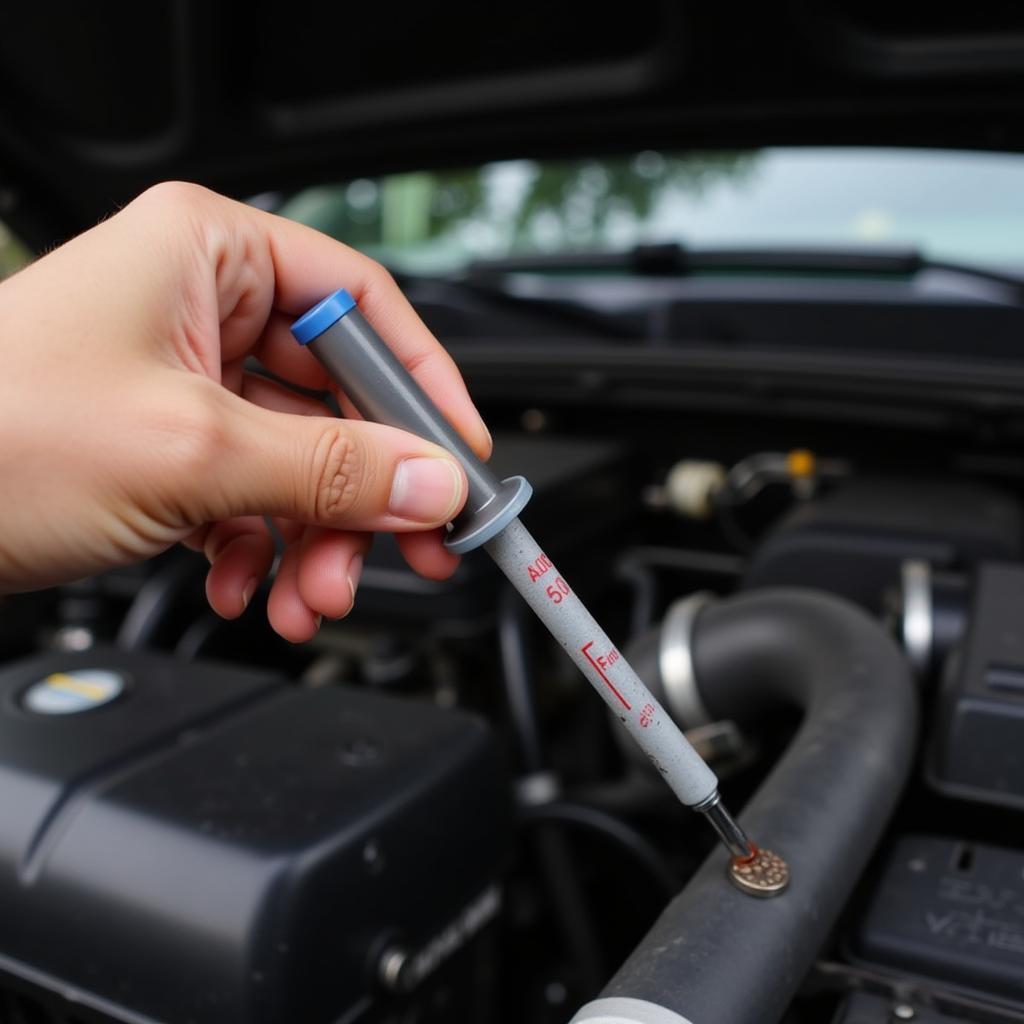Idling problems can be a frustrating experience for any car owner. A rough idle, stalling, or fluctuating RPMs can indicate underlying issues that require attention. This comprehensive guide will delve into the common causes of idling problems, diagnostic techniques, and solutions, empowering you to address these issues effectively.
Understanding Car Idling
A car’s idling system maintains engine speed when the vehicle is stationary. A smooth idle is essential for optimal fuel efficiency, reduced emissions, and overall drivability. When the idle is erratic, it’s a sign that something within this intricate system isn’t functioning correctly. Understanding the basics of the idling system is crucial for accurate diagnosis. This system involves various components, including the intake manifold, throttle body, idle air control valve, and various sensors.
What are some signs of idling problems? Common symptoms include rough idling, stalling, fluctuating RPMs at idle, and increased fuel consumption. Identifying these symptoms is the first step towards rectifying the issue.
Common Causes of Idling Problems
Several factors can contribute to idling problems. One common culprit is a dirty or faulty idle air control valve (IAC). The IAC regulates the amount of air entering the engine when the throttle is closed. A malfunctioning IAC can disrupt the air-fuel mixture, leading to a rough idle. Vacuum leaks are another common cause. These leaks disrupt the precisely calibrated air-fuel mixture, causing imbalances that affect idling performance. Similar to new car problems help, these seemingly small issues can significantly impact your vehicle’s performance.
Other potential issues include faulty spark plugs, worn ignition coils, clogged fuel injectors, a malfunctioning mass airflow sensor (MAF), or issues with the engine control unit (ECU).
Diagnosing Idling Problems
Diagnosing idling problems often involves a systematic approach. Start by visually inspecting the engine compartment for any obvious issues like loose or disconnected vacuum hoses. Next, use a diagnostic scanner to check for any stored error codes in the ECU. This can provide valuable insights into the source of the problem. This is akin to 210 malibu car problems where systematic diagnostics are essential.
Manually checking the components involved in the idling system is also crucial. Inspect the IAC valve for cleanliness and proper function. Check for vacuum leaks using a vacuum gauge or by spraying carb cleaner around potential leak points while listening for changes in engine RPM. “A thorough diagnostic process is key to identifying the root cause of idling issues,” says automotive expert, John Smith, ASE Certified Master Technician.
Solutions for Idling Problems
Once the cause of the idling problem is identified, implementing the appropriate solution is crucial. Cleaning or replacing the IAC valve is a common fix for many idling issues. Repairing vacuum leaks by replacing damaged hoses or tightening connections can also significantly improve idle stability. For issues with spark plugs, ignition coils, or fuel injectors, replacement is often the most effective solution. Like addressing the toyota camry 4 cylinder car problems, focusing on the specific issue leads to the most efficient repair.
 Mechanic Replacing IAC Valve
Mechanic Replacing IAC Valve
In more complex cases, issues with the MAF sensor or ECU might require specialized diagnostic equipment and expertise. “Regular maintenance, including timely tune-ups and cleaning of critical components, can prevent many idling problems from occurring in the first place,” advises Jane Doe, automotive engineer and consultant.
Why is My Car Idling Rough?
A rough idle is often caused by a disruption in the air-fuel mixture or ignition system. This can be due to issues like a faulty IAC valve, vacuum leaks, or worn spark plugs.
How Do I Fix a High Idle?
A high idle can be caused by various factors, including a faulty IAC valve, vacuum leaks, or a sticking throttle cable. Diagnosing the specific cause is essential for implementing the correct solution. This bears similarities to the car assignment problem in requiring precise identification of the issue.
What Causes a Car to Stall at Idle?
Stalling at idle can be attributed to various factors, including a dirty or faulty IAC valve, vacuum leaks, a clogged fuel filter, or a malfunctioning fuel pump. Proper diagnosis is essential to pinpoint the exact cause and implement the right fix. Much like understanding the problems of idling a car too long, addressing the root cause is key to a permanent solution.
 Car Stalling at Idle
Car Stalling at Idle
Conclusion
Idling problems in cars can stem from various causes, ranging from simple issues like dirty components to more complex problems involving sensors or the ECU. By understanding the common causes, applying systematic diagnostic techniques, and implementing the appropriate solutions, you can effectively address idling problems and restore your vehicle’s smooth and efficient operation. For further assistance or specialized diagnostics, don’t hesitate to connect with us. Contact AutoTipPro at +1 (641) 206-8880 or visit our office at 500 N St Mary’s St, San Antonio, TX 78205, United States. We are here to help you get back on the road with confidence.






Leave a Reply